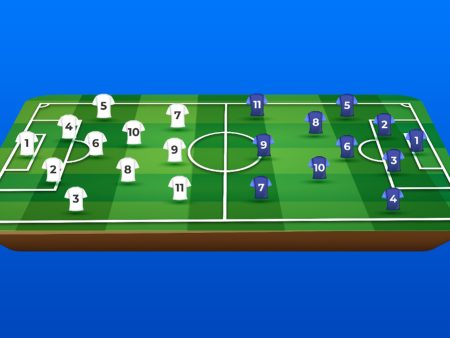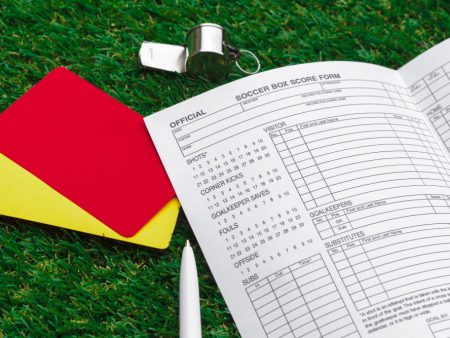
In the world of football, where the finest of margins can settle a match or a bet, understanding exactly what counts as a shot on target has never been more important. Whether you’re a die-hard football fan chasing stats, or a punter checking your football betting slip, one recurring question keeps coming up — does a penalty count as a shot on target?
This article digs deep into that very football debate. Using the Opta definition, we break down what counts as a shot on target, the grey areas around penalties, and how bets are settled depending on whether a shot was on target or not. It’s a must-read for any football enthusiast who takes their betting on football seriously or simply wants clarity on what’s going in the stats column.
What Exactly Is a Shot on Target?
A shot on target is more than just a ball heading vaguely in the direction of the goal. According to Opta, the UK’s go-to source for football stats, a shot on target is a clear attempt to score that would have gone into the net but for being saved by the goalkeeper or blocked by an outfield player standing as the last line of defence.
That means a blocked shot stopped by a defender 10 yards out doesn’t count. It also means a shot that hits the post or goes wide is not considered a shot on target. For a shot to be officially recorded as on target, it needs to either result in a goal, be saved by the goalkeeper, or be stopped by a player who is the last line of defence—often referred to as a last line block.
The definition matters. It determines not only match statistics but how markets are settled in shots on target betting.
Does a Penalty Count as a Shot on Target?
Now to the burning question: does a penalty count as a shot on target? The answer, according to Opta, is straightforward: yes, if the penalty is on target.
If a player scores from the spot, it’s officially counted as a shot on target. If the goalkeeper saves the penalty—again, it counts. But here’s the twist: if the penalty taker hits the woodwork, or the ball goes wide of the goal, it’s not considered a shot on target. So not every penalty is automatically a shot on target. It has to meet the same criteria as any other shot—it must either score, be saved, or be blocked on the last line. If it misses the net, it’s simply a shot off target.
Why It Matters for Football Betting
In the age of football betting, where fans are backing anything from corners to shots on target, this distinction can be crucial. Imagine placing a bet on a player to have over 1.5 shots on target, only to see him take and miss a penalty that goes wide. It doesn’t count, and your bet could lose because of it.
Bookies and platforms rely heavily on Opta stats to settle these markets. So if Opta doesn’t count it, your bookie won’t either. Understanding this can save you the headache of a disputed settlement or a misunderstood market.
What Happens When a Penalty Hits the Post?
If a penalty hits the post and goes wide or bounces back into play, it is not counted as a shot on target. The frame of the goal is not the same as the net. It might be a dramatic moment in a match, but in the world of stats, it’s a blank entry in the shot on target column.
According to the official definition, a shot that hits the post is not considered a shot on target, no matter how close it may look. It must be an attempt to score that would have gone into the net but for being saved or blocked on the last line.
Are Blocked Penalties Considered Shots on Target?
In rare cases, a penalty might be blocked by another player—let’s say a defender racing off the line illegally before the kick. That type of blocked shot might be reviewed, but if it’s blocked by an outfield player stopped by a player as the last line and would’ve gone into the net, then it can count as a shot on target.
But this is a rare scenario. Most blocked shots don’t meet the standard of a clear attempt to score that would have gone in but for a save or by an outfield block.
Do Penalty Shootouts Count Towards Stats?
Penalty shootouts after a draw are a different sporting beast. While they determine who wins the match, they don’t count towards official stats like shots on target. If you see a player score in a shootout, that goal doesn’t go in their match record.
So if you’ve got a bet riding on a player having 2+ shots on target in the match, and one of them comes in the shootout—it won’t count. That’s a completely separate phase of the game.

What’s the Difference Between Shots on Target and Shots Off Target?
Understanding this helps make sense of the grey area around penalties. A shot on target is one that results in a goal, is saved by the goalkeeper, or blocked on the last line. A shot off target is a shot that goes wide, over the bar, or hits the post.
For example:
- A ball hitting the post and bouncing out = shot off target.
- A low drive saved by the goalkeeper = shot on target.
- A penalty slotted into the net = shot on target.
- A ballooned penalty into Row Z = shot off target.
What Does Opta Say About Shots on Target?
Opta is the gold standard in football statistics. They define a shot on target as a clear attempt to score that would have gone in but for a save or a last-line block. Their rules are used by clubs, media, and bookies alike.
If Opta doesn’t count the shot, the market won’t settle it as a win for your bet. That’s why it’s so important to understand what Opta considers when recording stats. There’s no guesswork—the definition is black and white.
What Counts As a Shot That Hits?
A shot that hits the net, whether through a goal or a save, is in the shot on target column. But a shot that hits the post, or is deflected wide, doesn’t count. Even if it’s close, even if the keeper was nowhere near it—unless the ball was going in and stopped on the last line, it’s a no-go.
This matters because many bets and stats include clauses around “shots that hit the target.” So know the difference—it’s more than just watching the ball travel.
Why Some Shots on Target Are Not Counted by Bookies
Sometimes fans get frustrated when a clear attempt to score doesn’t show up in the stats. That’s usually down to it not fitting Opta’s definition. If the ball is blocked before reaching the goalkeeper, even if it looks like it was on target, it won’t count.
So a shot deflected by a sliding defender, a ball stopped by a player not on the last line, or a goal-bound attempt that doesn’t reach the keeper—none of them make it into the on target column.
How Is the Market Settled in Shots on Target Betting?
For any shots on target betting market, it’s the Opta data that matters. Whether you’re betting with a major bookie or a betting exchange, your bet will be settled based on official stats. If Opta says it’s not a shot on target, you can’t argue it with the bookie.
Always read the terms. Some markets even state: “Based on Opta definitions.” That’s your blueprint—understanding that stat will keep you in control of your bets.

Summary: Key Points to Remember
- ✅ A penalty counts as a shot on target if it results in a goal or is saved by the keeper.
- ❌ A penalty that hits the post, goes wide, or misses the goal does not count.
- 📊 Opta defines a shot on target as a clear attempt to score that is saved, scored, or blocked by the last player.
- 💰 Shots on target markets for football betting are always based on Opta stats.
- ⚠️ Penalty shootouts do not count towards match stats or bets.
- 🧠 A shot off target includes anything wide, over, or off the woodwork.
- 🧱 Blocked shots only count if stopped by a player as the last line of defence and the ball was heading into the net.
- 📋 Know the definition, understand the market, and you’ll be one step ahead in football betting.
If you’re backing a player in the shots on target market, or analysing a match with an eye on the stats, make sure you understand when a penalty counts as a shot. It’s these marginal gains in knowledge that help turn bets into winners—and debates into certainties.










